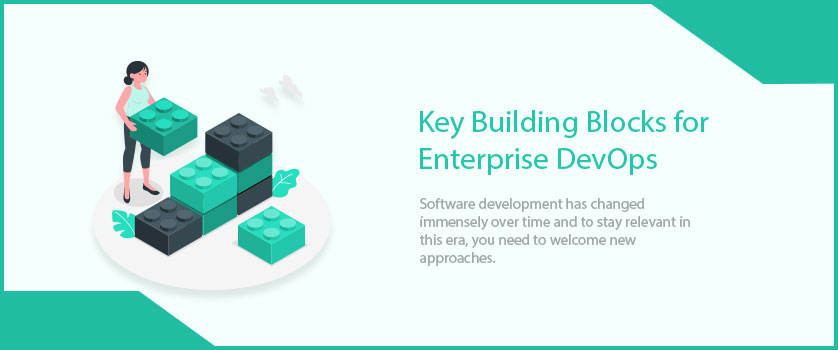


Software development has changed immensely over time and to stay relevant in this era, you need to welcome new approaches. DevOps has proved its significance and there are lots of companies that want to leverage it to get ahead of their competitors. But it is not just technology like many people think it is.
It is a cultural shift to new practices, where many teams work collaboratively for a common goal. However, it sounds too philosophical but it’s true.
If you’re one of them who also finds it difficult to get the real meaning behind such a “philosophical” statement, then this article is for you.
This article will help you understand the practices that are the building blocks of DevOps, and how you can implement them in your everyday life.
Continuous Integration: One of the main components of DevOps is Continuous Integration (CI). This practice allows teams to merge all development work to shared mainline multiple times a day. DevOps and CI tools are the core of Software Development Life Cycle SDLC that provides the following benefits:
Configuration Management: Configuration management requires time and resources. And if you want to implement a successful DevOps strategy within your organization, you should try to automate configuration management (CM) with tools, such as Puppet, Chef, Ansible, etc. These tools help you with configuration management and automated deployments across different environments. Contrary to that, if you don’t integrate configuration management tools, you would face a lot of difficulties, and your DevOps journey will not be considered a success.
Source Code Management: SCM (Source-code management) tools such as Git, Perforce, SVN contain the source code related to projects including application codes and infrastructure codes. As you push updates to infrastructure codes, CI tools trigger the environment creation process, where the existing environments are broken down and new environments are created, after which software packages are deployed with them.
Containerization: Containerization unlocks the true potential of the cloud environment. Container technologies like Docker containers get admiration from many professionals across all levels of an organization because of the automation capabilities. By using the appropriate CI and CM tools, you can create self-service environments for DevOps or testing in no time using Docker containers.
Containers Orchestration: Containers are incomplete without container orchestration tools such as Kubernetes and Docker Swarm. The need for a container orchestration tool arises when you need to deploy one or more containers hosting a particular microservice based on increased incoming user requests. However, this is an example of the benefits that a container orchestration tool offers. Since the use of cloud-native apps is on the rise it’s important to take note of container orchestration tools and make them a significant part of the DevOps framework.
Packaging: Packaging technologies such as RPM or NPM are very essential to achieve overall automated deployments. Once the application is built successfully with CI tools, it is packaged using RPMs and posted on the packaging repositories so it could be checked out during the deployment automation process.
Package Repositories: Once applications are packaged, these packages are needed to upload into some repositories. And after uploading these packages into package repositories, they can be downloaded and installed as part of the automated deployment process. JFrog, DockerHub are some examples of packaging repositories.
Database Automation: DevOps automation also stresses the automation of the execution or migration of DB scripts. To do this, there are lots of tools available, such as Flyway, Datical, etc. Once you get a hold of these technologies, you can achieve end-to-end DevOps automation.
Workflow: To be better at continuous delivery, you need to ensure only quality software is delivered. Hence, the release comes into play and it becomes critical from different perspectives, such as security and faster time to market. However, DevOps offers you to incorporate various tools to automate the release cycle, yet you would need some manual intervention so you can address all the release perspectives in a good manner. The effective use of automation tools and manual efforts play a crucial role in the workflow of the organization and it works as a bridge between continuous delivery and continuous deployment.
Cloud Platforms: As the need for cloud platforms is rising, you need to understand how these cloud platforms work. You need to understand how the applications are deployed onto these platforms. Besides this, today, lots of cloud vendors are coming up with great features and services. Hence, you need to gain insights into all the cloud platforms and identify which one is best for you.
Cloud Integration: Many cloud platforms are offering different integration facilities like integration with code repositories, pipelines, artifacts, cross-platform support, third-party integration, etc. Hence, you need to understand the requirement of your organization so you can plan a more comprehensive DevOps strategy.
DevOps allows you to build, test, and deploy the application faster. Surely, lots of automation tools are required to make it possible. But this isn’t the complete story. To implement this approach successfully, you need to understand how the complete pipeline works, and how you would make your own pipeline that guarantees good results.
This article helps you understand all the building blocks that are used in DevOps. And once you know about it, you can implement a similar process in your organization.